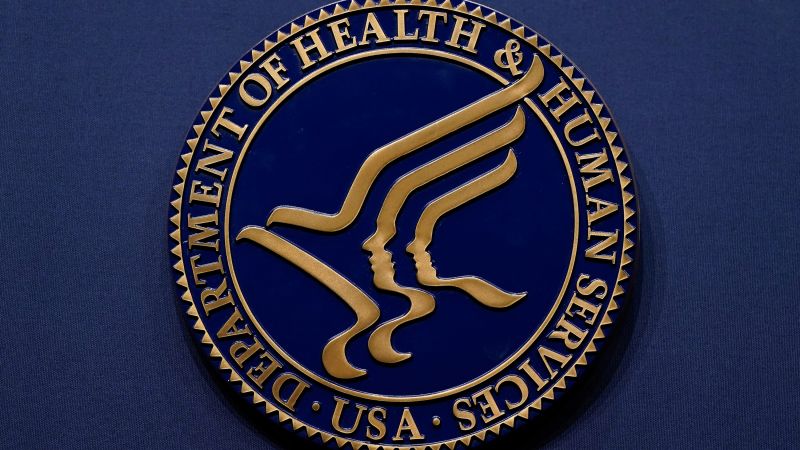The U.S. Department of Health and Human Services (HHS) announced a bold initiative on Thursday to advance the development of a universal flu vaccine. This critical effort aims to achieve what has eluded scientists for the past 45 years: a vaccine capable of providing protection against multiple influenza virus strains, including those with pandemic potential, such as the H5N1 avian influenza virus. With a target to accomplish this goal within four years, HHS is positioning the National Institute of Allergy and Infectious Diseases (NIAID) at the forefront of this groundbreaking project.
National Institutes of Health Director Dr. Jay Bhattacharya described the initiative, named “Generation Gold Standard,” as a revolutionary approach that transcends the limitations of strain-specific vaccines. The intention is not only to address current influenza threats but also to prepare for future viral challenges using advanced but traditional vaccine technology that has been updated for modern application.
Under this initiative, the HHS is working towards the goal of obtaining U.S. Food and Drug Administration (FDA) approval for the universal influenza vaccines by 2029, with human clinical trials set to commence next year. Funding for the project amounts to $500 million, a commitment made by the Biomedical Advanced Research and Development Authority (BARDA), as first reported by The Wall Street Journal and later confirmed by an HHS spokesperson.
The optimism surrounding this project is tempered by skepticism within the scientific community. Notable vaccine expert Dr. Paul Offit from the Children’s Hospital of Philadelphia expressed hope for the endeavor, reflecting on his experience in the early 1980s where similar attempts to create a universal flu vaccine had not resulted in success. He emphasized that the challenges presented by the diverse and rapidly mutating nature of flu viruses are formidable.
This ongoing difficulty arises because flu viruses tend to mutate from season to season, necessitating annual updates to flu shots to keep pace with the latest circulating strains. The HHS initiative not only targets influenza vaccines but also extends its goals towards the development of universal coronavirus vaccines, aiming to guard against not only SARS-CoV-2, the virus responsible for COVID-19, but also its close relatives, SARS-CoV-1 and MERS-CoV.
The vaccine technology under investigation employs inactivated whole-virus vaccines, a traditional method that delivers a complete virus that has been chemically altered to eliminate its ability to infect human cells. Central to this project are the contributions of Dr. Matthew Memoli and Dr. Jeffery Taubenberger, both prominent figures within the NIH and NIAID.
Dr. Memoli, who became known for his opposition to COVID-19 vaccine mandates and his refusal to receive the vaccine himself, stated in 2022 that one of the project’s advancements includes a potential nasal-spray vaccine that aims to replicate the immune response typically achieved after a natural influenza infection. While vaccine experts recognize the ambition behind the universal flu and coronavirus vaccine pursuits, they remain wary of whether these initiatives will yield successful outcomes.
Dr. Greg Poland at the Mayo Clinic articulated the expected criteria for a universal flu vaccine: it should provide at least a 75% efficacy against symptomatic infections across multiple strains and ideally should offer protection over multiple seasons for all age groups. He pointed out that one of the most advanced candidates in this new initiative, known as BPL-1357, is focused primarily on avian influenza viruses, raising concerns that the project may not address seasonal flu viruses effectively.
Poland also expressed curiosity regarding the significant financial resources allocated to a vaccine technology method that has largely fallen out of favor in contemporary vaccine development. Concerns regarding the reliance on whole-virus vaccines stem from their history of causing adverse reactions, prompting many developers to pursue safer, subunit approaches.
Challenges faced by whole-virus vaccination strategies include their propensity to generate strong immune responses that can potentially lead to serious side effects, as evidenced by historical data regarding the swine flu vaccine, which was linked to elevated rates of Guillain-Barré syndrome. Critics argue that the decision to reinvest in technologies considered outdated may not be justified without addressing their drawbacks.
HHS’s announcement also casts uncertainty on the future of seasonal COVID-19 vaccine updates. The agency indicated changes in its approach toward vaccines, suggesting that future vaccines would undergo rigorous placebo-controlled trials, which could significantly delay their availability. Experts underline that timely access to updated vaccines remains critical, particularly for vulnerable populations, emphasizing the necessity for a robust response to circulating strains.
As discussions on vaccine efficacy, safety, and development strategies evolve, experts continue to navigate the complex landscape of vaccine research and public health initiatives. The potential introduction of a universal flu vaccine, while ambitious, underscores the ongoing challenges in combating respiratory diseases and protecting global health. Through continued commitment to innovation and rigorous scientific evaluation, the hope for improved vaccine solutions remains alive within the scientific community.



